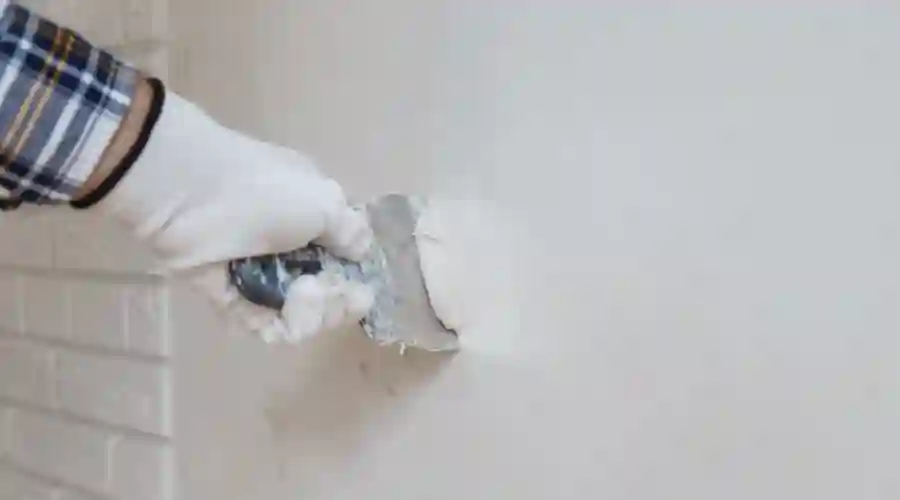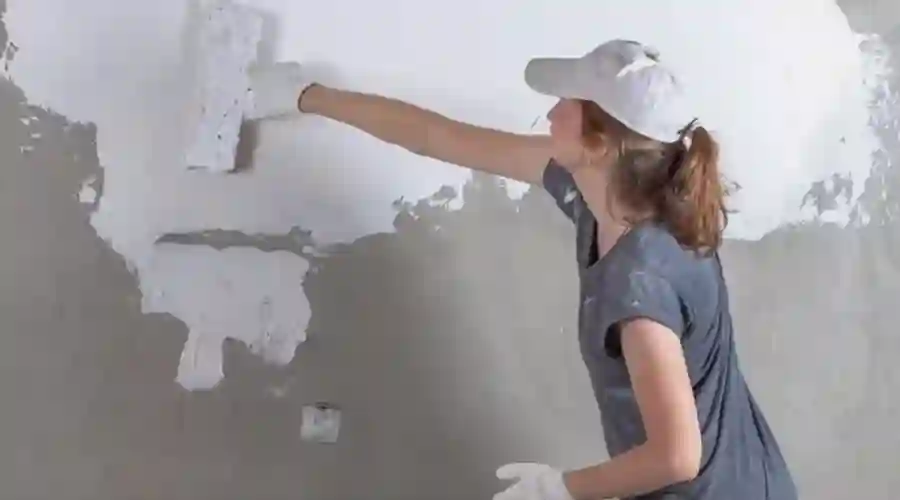People often judge the quality of the building based on the walls in the living room, which has always been a prime focus. Thus, it is necessary to have a flawless look on the wall surface to resonate with the overall look. This is where wall putty plays a crucial role. Wall putty helps transform the look of the walls, creating a more uniform, welcoming, and sophisticated look, and offers numerous benefits. This blog will take a deeper look at wall putty, its types, benefits and how it helps keep the wall surface durable and elevate the overall appearance of the living room.
What is Wall Putty?
Wall Putty is a white-cement-based powder that consists of minerals and high-quality polymers. It is mixed with water and other additives to fill cracks and imperfections, and it acts as a base layer before painting or wallpapering. Generally, two layers of putty are applied to the wall. The first layer is applied to fill any uneven surfaces of the wall and the second coat ensures a smooth finish before painting.
Types of Wall Putty
White Cement Wall Putty

It is a cement-based wall putty that is most commonly used for internal and external surfaces of the wall. It is primarily made of white cement, polymers, and fine materials to provide a smooth and sleek finish. It acts as an excellent binding material and provides good resistance to dampness and fungal growth. It offers good workability and has low absorption of paint, which works well with all types of paints. It is most commonly used in areas where a smooth, bright finish is essential, such as living rooms and bedrooms.
Acrylic Wall Putty

Acrylic Wall Putty is a water-based wall putty that is made with white pigments, acrylic emulsion medium, and additives. It offers a smooth and matte finish for wall surfaces, making it suitable for internal applications. It is available both as a ready-mix and in powdered form, offering flexibility and resistivity against moisture and temperature. The quick setting time makes it easy to apply and prevents the paint from peeling, making the paint last longer.
Wall Putty Finishes for Living Room Designs
- The matte finish keeps the surface smooth and even, without a shiny surface. It is a contemporary and minimalist finish that helps create a calm and subtle look, ideal for modern interiors.
- A glossy finish offers a shiny and reflective look that adds a touch of luxury and vibrancy. It reflects the light and makes the room feel brighter and more spacious.
- Textured finish gives a rough and uneven surface, offering a 3D effect. The walls with this finish are suitable for traditional and rustic-style living rooms. The depth of the texture can be varied from light to heavy, based on the design preferences.
- A polished finish provides a high-glossy, sleeky and smooth surface, that is ideal for creating a sophisticated, modern look that adds depth and reflects light, in your living room. It requires regular maintenance to keep the surface fresh for a long time.
- A metallic finish offers a metallic effect that catches the light to create a high-end, grand, and elegant look. This is best used for feature walls or accent walls.
- A Venetian finish creates smooth and slight textures, that give classy, luxurious looks, which when blended with neutral tones, or bolder hues suit your style.
- A faux finish imitates the appearance of wood, leather, and marble, which adds more artistic flair to the living room. It is ideal for creating unique surfaces with a bold focal point throughout the wall.
Colour Options for Wall Putty in the Living Room
- Soft neutral colours such as white, light beige, cream, off-white, and taupe can be used over the wall putty to create a modern, minimalistic, and transitional interior.
- Warm tones such as warm grey, soft taupe, sand, light terracotta, and warm peach colour walls can be used to create more traditional, rustic and Mediterranean-style rooms.
- Cool tones such as light blue, soft grey, mint green, light lavender, and seafoam can be used to create coastal, contemporary and modern styles for larger living spaces.
- Earthy and natural shades like olive green, sage, moss green, warm brown, and terracotta shades give a rustic and nature-inspired look to the living rooms.
- Muted pastel colours such as dusty rose, powder blue, peach, and lavender are ideal for creating vintage and contemporary spaces, with an inviting living room atmosphere.
- Deep and rich shades like charcoal grey, navy blue, burgundy, forest green, and chocolate brown give formal, elegant, and eclectic living room designs.
How to Apply Wall Putty for a Perfect Finish?
- Clean the surface of the wall to ensure that it is free from cracks or patch holes. Smoothen the rough surface with sandpaper, and keep it ready before applying putty.
- In the case of powdered putty, mix it with the appropriate amount of water to bring it to a smooth and pasty consistency.
- Uniformly apply and spread the first layer of putty across the wall surface using a trowel.
- Allow the putty to dry completely before using fine-grit sandpaper to remove imperfections.
- After ensuring that the wall is uniform throughout the surface, apply the final coating for a smooth and polished finish.
- Clean the wall with a damp cloth to remove sanding dust from the surface.
- Apply a primer over the putty base to help the paint adhere better and create a uniform finish.
- After the primer has dried, apply paint in thin layers for a smooth finish.
Maintenance and Durability of Wall Putty
- Wiping the walls regularly with a damp cloth can be effective to remove dust.
- Mild soap and water can be used to remove stains, and it is important to avoid harsh chemicals and scrubbing.
- Address spills promptly to prevent staining, and any chips or scratches can be retouched.
- For humid areas such as kitchens and bathrooms, moisture-resistant paints and primers can be used to make it more durable.
- High-quality paints that are more durable, and washable can be used to maintain the fresh looks for a long time.
- Make sure that the room is properly ventilated to avoid moisture-related damage.
Conclusion
In summary, wall putty helps create a smooth and flawless wall for the living room. They serve as a perfect base for the wall surface that balances both the aesthetic looks and durability. Putty helps in fixing the cracks and undulations in the wall surface, and offers a levelled surface, over which paint or textures can be added to elevate the looks of the interior, ensuring that lasts for years.

